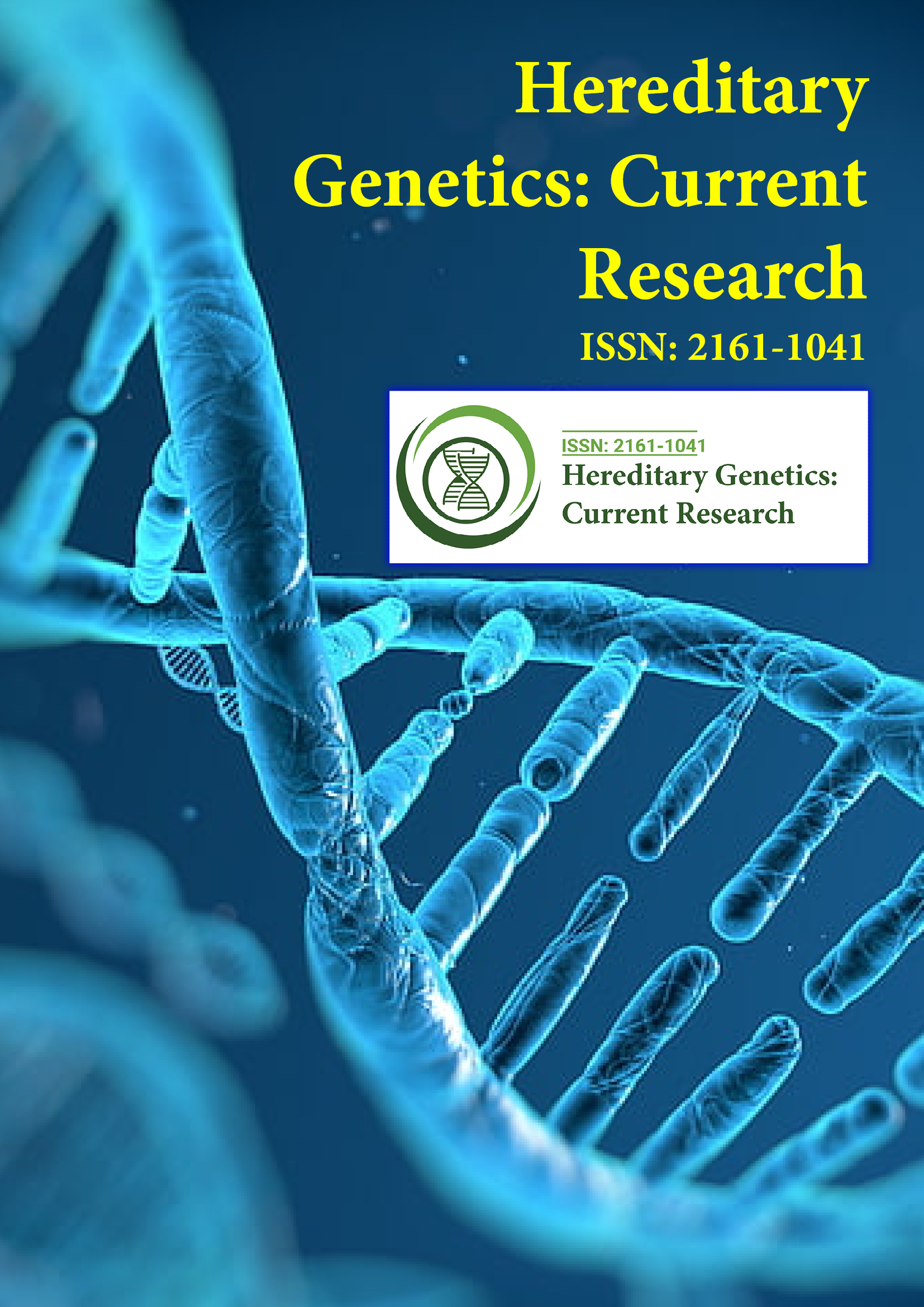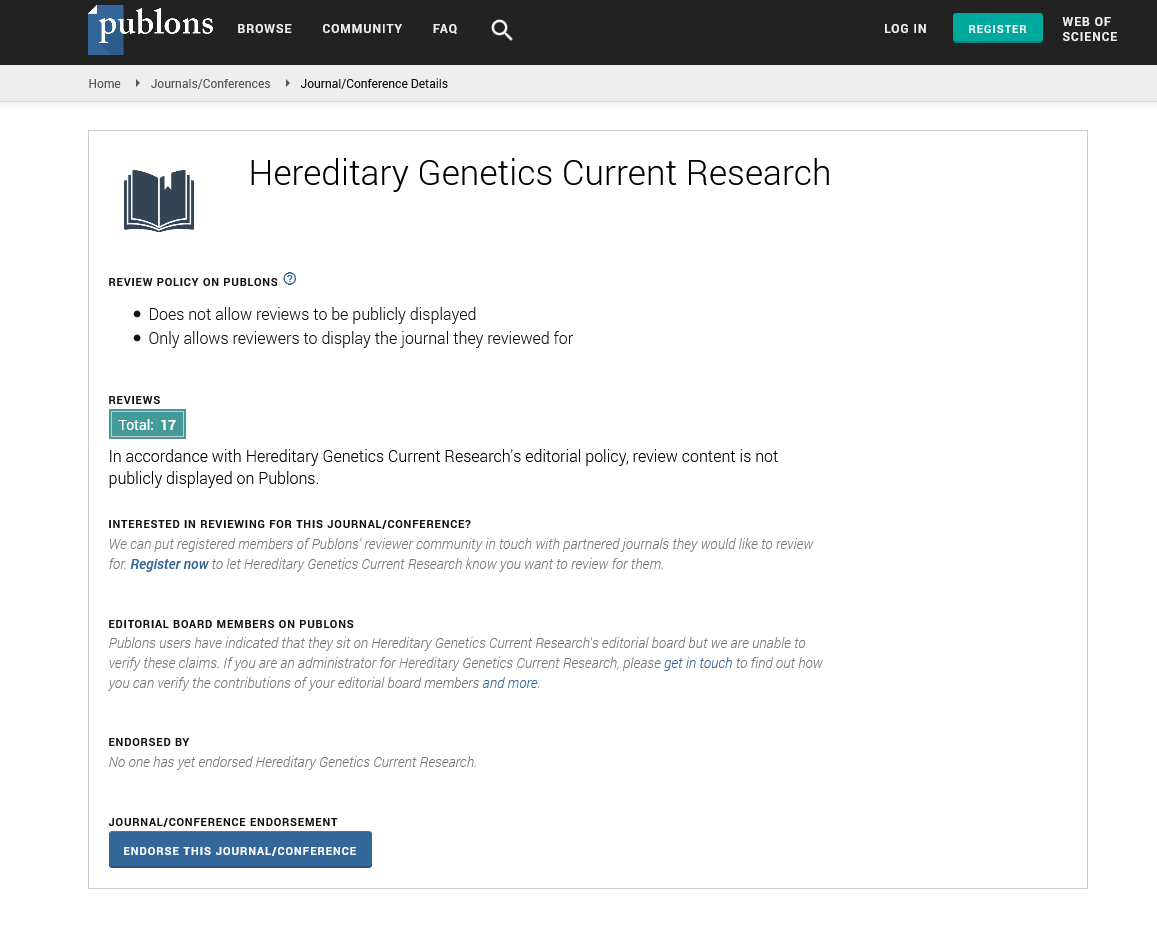Indexed In
- Open J Gate
- Genamics JournalSeek
- CiteFactor
- RefSeek
- Hamdard University
- EBSCO A-Z
- NSD - Norwegian Centre for Research Data
- OCLC- WorldCat
- Publons
- Geneva Foundation for Medical Education and Research
- Euro Pub
- Google Scholar
Useful Links
Share This Page
Journal Flyer

Open Access Journals
- Agri and Aquaculture
- Biochemistry
- Bioinformatics & Systems Biology
- Business & Management
- Chemistry
- Clinical Sciences
- Engineering
- Food & Nutrition
- General Science
- Genetics & Molecular Biology
- Immunology & Microbiology
- Medical Sciences
- Neuroscience & Psychology
- Nursing & Health Care
- Pharmaceutical Sciences
Methylation pattern switch between low and high grade cervical intraepithelial neoplasia: Implications for progression models, robust triage and cancer risk
4th International Congress on Epigenetics & Chromatin
September 03-05, 2018 | London, UK
Nedjai B, Reuter C, Ahmad A, Kleeman M, Banwait R, Warman R, Carton L, Sabrina Boer S, Vasiljevic N, Cuzick J and Lorincz A
Barts and the London School of Medicine and Dentistry–Queen Mary University, UK
Scientific Tracks Abstracts: Hereditary Genet Curr Res
Abstract:
The evolution of precancerous cervical lesions is poorly understood. One hypothesis, the molecular switch model, states that CIN3 could evolve straight from normal epithelium after an HPV infection without progressing through the CIN1 and CIN2 stages. To shed light on this process, we compared DNA methylation of selected biomarkers and HPV type in two groups of CIN1: CIN1 that were adjacent to CIN3 (adjacent-CIN1) and CIN1 that were the principal lesions with no CIN3 present (principal-CIN1). 354 CIN (CIN1 and CIN3) and normal tissue were macrodissected and typed for HPV from 127 women who underwent loop electrosurgical excision procedures (LEEP). Methylation of genes EPB41L3 and the viral regions of HPV16-L1/L2, HPV18-L2, HPV31-L1 and HPV33-L2 were determined by quantitative pyrosequencing of bisulfite converted DNA. Corresponding HPV types were also obtained on paired exfoliated specimens collected before treatment. There was a highly significant trend of increased methylation with disease progression from normal to CIN3 (p<0.0001). CIN1 adjacent or near CIN3 (adjacent-CIN1) predominantly shared the same HPV types as the CIN3. In contrast, methylation differed substantially between adjacent-CIN1 and CIN3 (p=0.008); however, diagnostically principal-CIN1 had indistinguishable methylation compared to adjacent-CIN1 (EPB41L3: p=0.49; HPVme-All: p=0.11). HPV types and methylation levels in LEEP and corresponding exfoliated cells were similar, with 99% of CIN3 and 88% of CIN1 containing matching HPV types. Our results suggest that progression from normal epithelium to CIN1 or CIN3 can be promoted by the same persistent HPV type but occurs via distinct DNA epigenotypes, thus supporting the molecular switch model. Recent Publications 1. Bagnati M, Ogunkolade B W, Marshall C, Tucci C, Hanna K, Jones TA, Bugliani M, Nedjai B, Caton P W, Kieswich J, Yaqoob M M, Ball G R, Marchetti P, Hitman G A and Turner M D (2016) Glucolipotoxicity initiates pancreatic ?-cell death through TNFR5/CD40-mediated STAT1 and NF-?B activation. Cell Death & Differentiation 7(8):e2329. 2. Nedjai B, Viney J M, Li H, Hull C, Anderson C A, Horie T, Horuk R, Vaidehi N and Pease J E (2015) CXCR3 antagonist VUF10085 binds to an intrahelical site distinct from that of the broad spectrum antagonist TAK-779. British Journal of Pharmacology 172(7):1822-33. 3. Turner M D, Nedjai B, Hurst T and Pennington D J (2014) Cytokines and chemokines: At the crossroads of cell signalling and inflammatory disease. Biochimica et Biophysica Acta 1843(11):2563-2582. 4. Turner M D, Chaudhry A and Nedjai B (2012) Tumour necrosis factor receptor trafficking dysfunction opens the TRAPS door to pro-inflammatory cytokine secretion. Bioscience Reports 32(2):105-12.
Biography :

